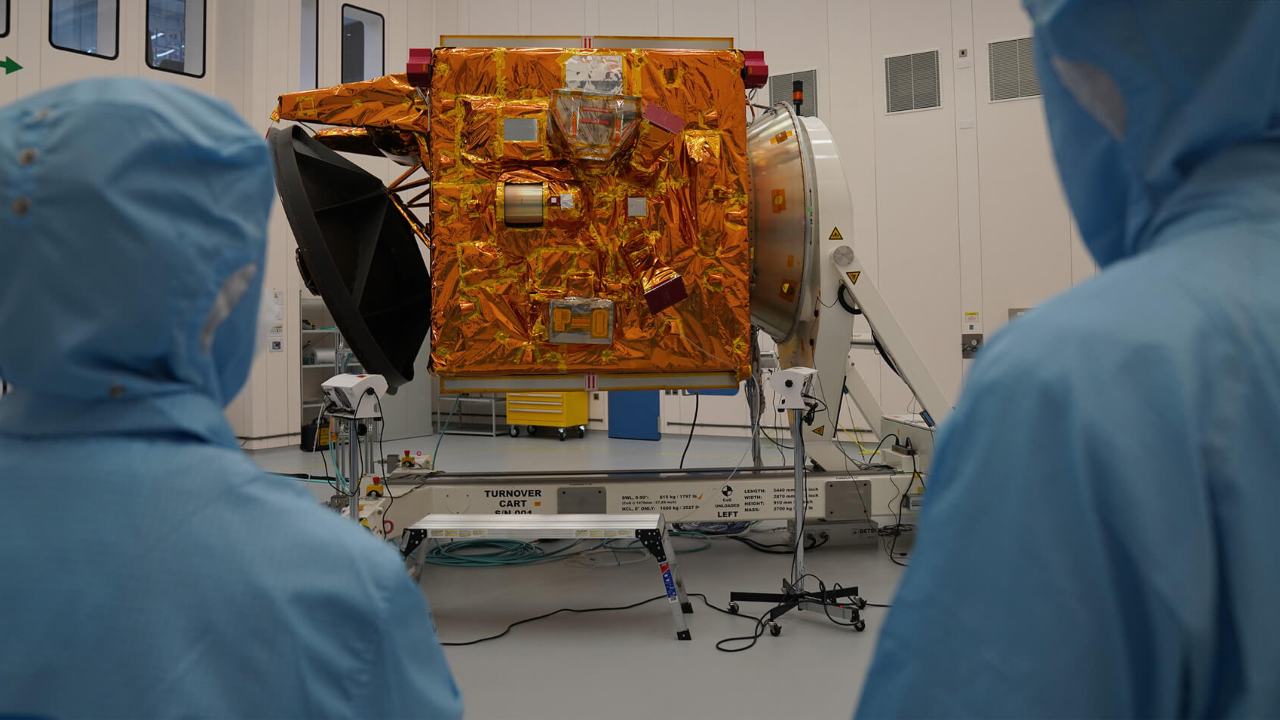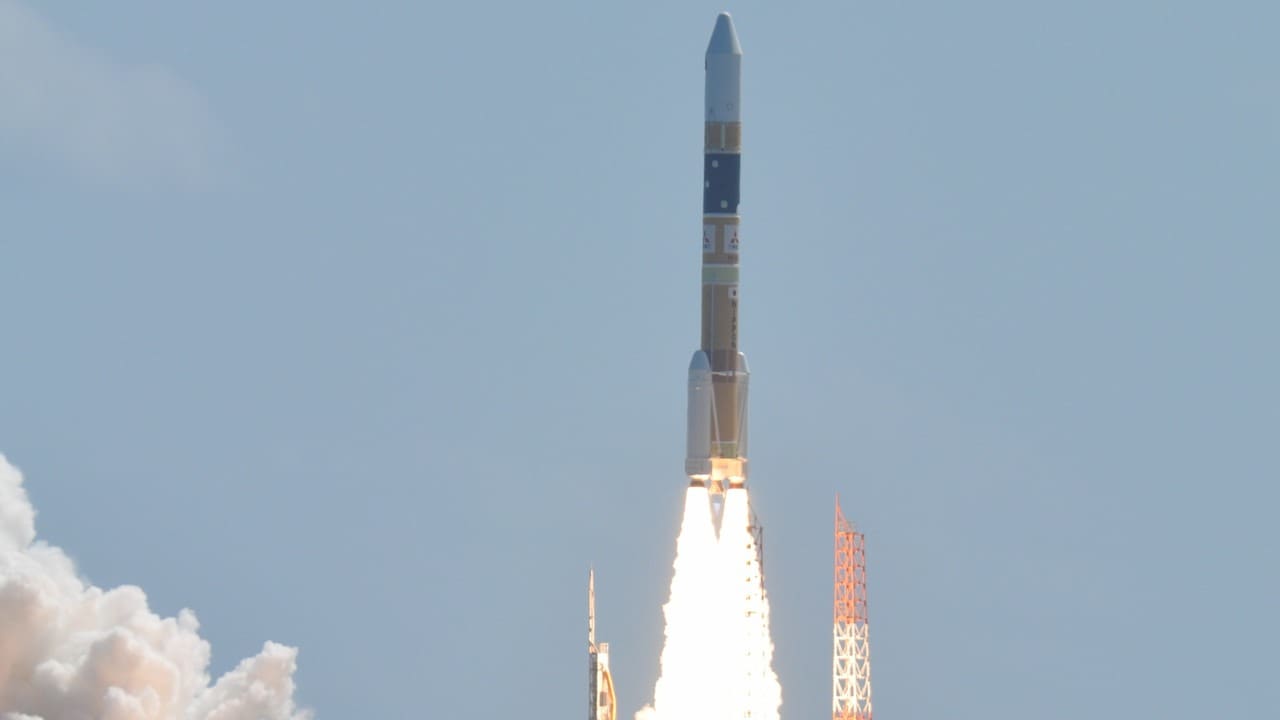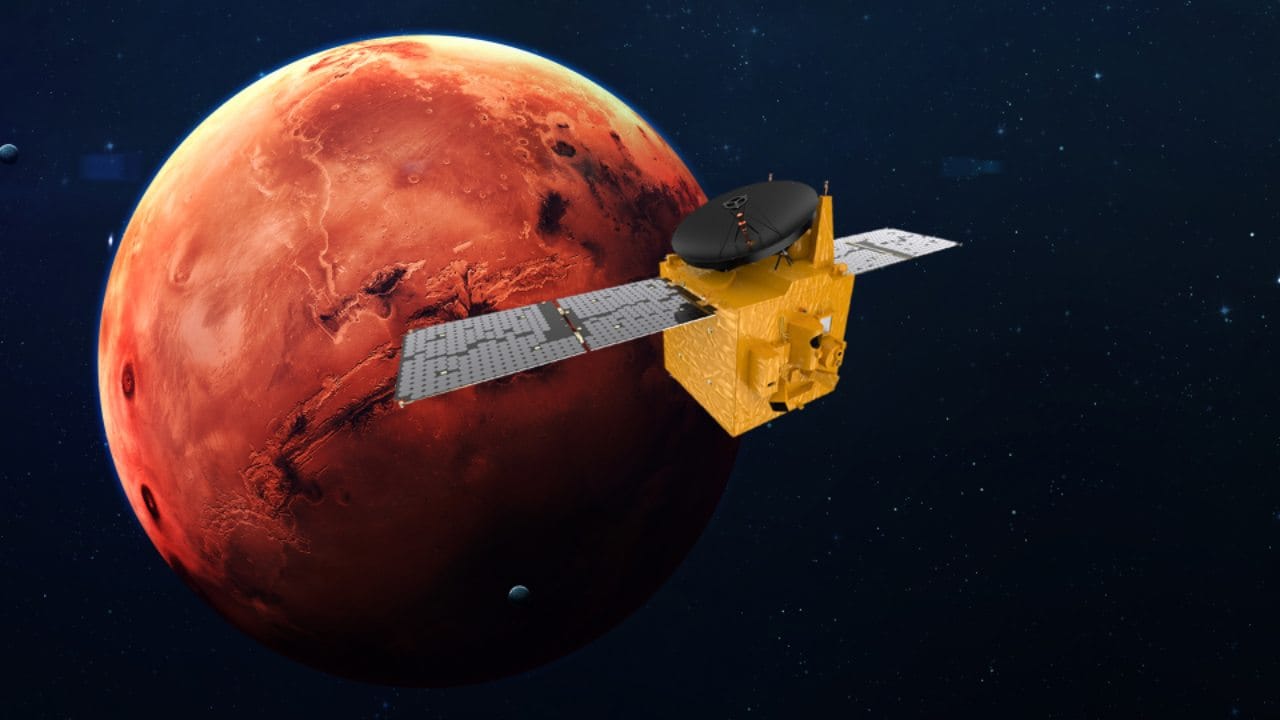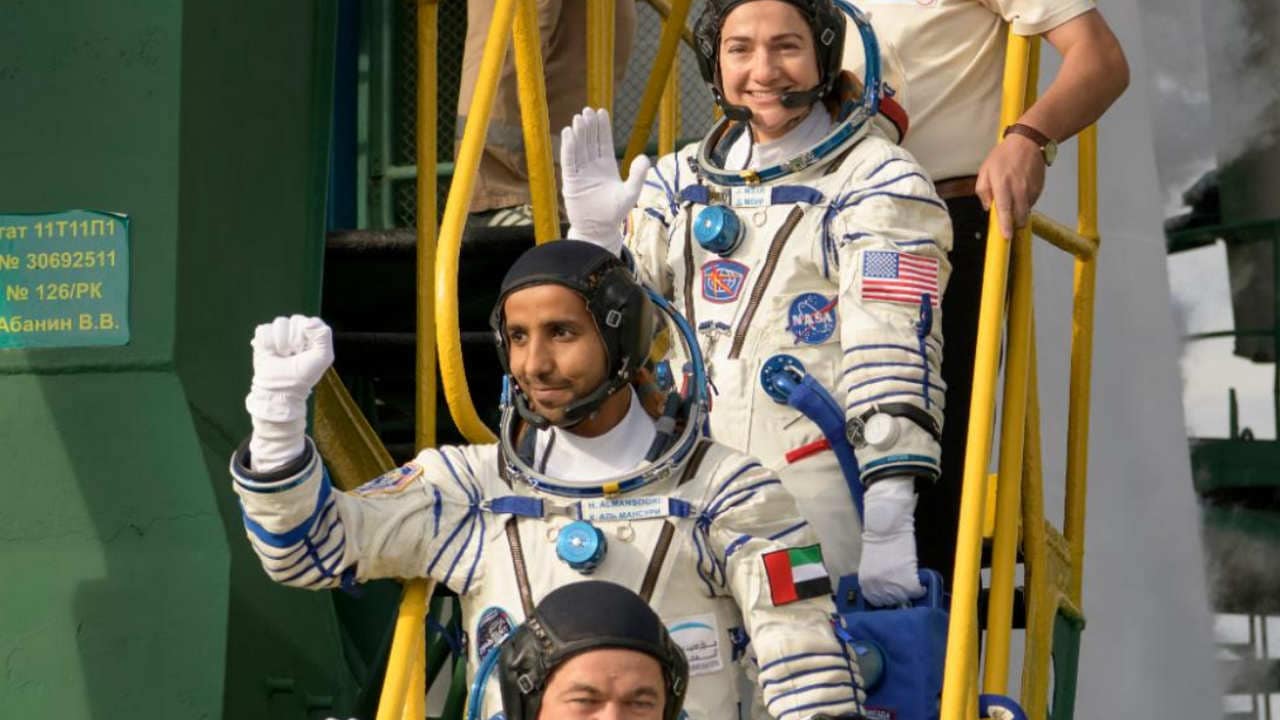
[ad_1]
tech2 News StaffJul 15, 2020 10:35:55 IST
The launch of UAE’s Hope Mars mission has been delayed due to poor weather conditions at the launch site in Tanegashima Space Center, Japan. Originally scheduled to blast off on 15 July at 2.21 am IST, the revised launch attempt is now targeting Friday, 17 July at 2.13 am IST.
developed through a partnership between Mohamed bin Rashid Space Centre (MBRSC), Laboratory for Atmospheric and Space Physics at the University of Colorado-Boulder, and Arizona State University (ASU).
The Hope mission is a Mars orbiter spacecraft, designed to study the thin atmosphere of Mars and help explain how the planet loses hydrogen and oxygen from its atmosphere into space. The mission is officially named the Emirates Mars Mission (EMM) and the orbiter has been named Hope or ‘Al Amal’. If successful, the Hope orbiter will join six others in studying Mars, from the US, Europe and India.

The UAE’s Hope Probe is the Arab nations’ first interplanetary mission. Image credit: Mohammed bin Rashid space Centre
The Hope mission was originally supposed to launch on 15 July at 2.21 am IST (12.51 am local time in the UAE).
The delay was announced on the Mars orbiter’s Twitter page.
The UAE Space Agency and the Mohammed bin Rashid Space Center, in collaboration with Mitsubishi Heavy Industries, have announced a delay of the Emirates Mars Mission’s Hope Probe launch due to the weather conditions at the launch site of Tanegashima Island in Japan.
— Hope Mars Mission (@HopeMarsMission) July 14, 2020
Almost 20 minutes after the canceled launch, the new date for the launch as announced.
The UAE’s space mission, the Arab world’s first interplanetary mission, will launch on Friday July 17, 2020 at 12:43am UAE time (July 16, 2020 at 8:43pm GMT) from Tanegashima Space Center in Japan.
— Hope Mars Mission (@HopeMarsMission) July 14, 2020
However, before the launch, Keiji Suzuki the launch site director for Mitsubishi Heavy Industries said ‘a seasonal rain front was expected to cause intermittent lightning and rain over the next few days’.
“But this thunder is not expected to be severe or lasting, and our assessment is that there will be a chance for a launch,” Suzuki told an online briefing Monday from Tanegashima. “We will make a careful decision based on data.”
According to Spaceflight Now, the mission managers decided to postpone the launch before the 53-meter H-IIA rocket was ready to roll out to the launch pad at the space centre, for fueling and final countdown preparations.
Heavy rain has continued for more than a week in large areas of Japan, triggering mudslides and floods and killing more than 70 people, most of them on the southern main island of Kyushu.

The H-IIA (H-2A) is an active expendable launch rocket operated by Mitsubishi Heavy Industries (MHI) for the Japan Aerospace Exploration Agency (JAXA). The liquid-fueled H-IIA rockets have been used to launch satellites into geostationary orbit, to launch a lunar orbiting spacecraft, and to launch Akatsuki, which studied the planet Venus. Image: Wikimedia Commons
The UAE has a relatively long window to launch the orbiter, that opened up on 14 July and will stay open till 12 August 2020. This window will give them a sufficient buffer in case any other unsuspecting technical difficulties or weather issues arise. However, if they do not launch it within this timeframe, they risk delaying the launch by two years, to 2022.
The reason being that one Martian year is equal to almost two years on Earth i.e. Mars takes two Earth years to complete one orbit around the sun. It is only once every two years that the two planets come into perfect alignment with each other around the Sun. This alignment is the ideal time for an Earth-Mars journey since it saves on time, money and fuel. Interplanetary missions are no joke; in any and all conditions, are an expensive, time-consuming affair that requires a lot of planning.
About Hope Probe
The Hope orbiter will be aboard the H2A202 rocket, part of the H-IIA launch vehicle family developed by the Mitsubishi Heavy Industries. The rocket is made up of the first stage, second stage, payload fairing and a pair of Solid Rocket Boosters. The propulsion system of the launch vehicle uses liquid hydrogen and liquid oxygen.
Hope is set to reach Mars in February 2021, the year the UAE celebrates 50 years since its formation.

Hope Mars Mission. Image: Twitter/Jim Bridenstine
Hope is carrying three instruments to study the upper atmosphere and monitor climate change and is scheduled to circle the red planet for at least two years.
Emirates Mars Mission Project Director Omran Sharaf, who joined Monday’s briefing from Dubai, said the mission is not just a repeat of what other countries have done. It will provide a complete view of the Martian atmosphere during different seasons for the first time, he said.
According to NASA Space Science Data Coordinated Archive, the Hope probe will enter an elliptical orbit around Mars that is roughly 22,000 x 44,000 km (nearest x farthest) in altitude, taking approximately 55 hours to complete a single orbit. As per plans, Hope is designed to carry out two years of science operations starting May 2021, with a possibility of a two-year extension to do more science till 2025.
The Hope Probe has a mission life of one Martian year and weighs around 1.350 kgs. It is three metres high and 7.9 metres wide. It also has a 600-watt solar panel that charges its battery.
Future in space for the UAE
A successful Hope mission would be a major step for the UAE’s oil-dependent economy that is seeking a future in space.
The country first announced plans for the mission in 2014 as part of efforts to diversify away from hydrocarbons and develop a knowledge economy, aiming to reach the planet by 2021. With a population of 9.4 million, most of whom are foreign workers, the UAE lacks the scientific and industrial base of the big space-faring nations. It launched a National Space Programme in 2017 to develop expertise in space science among Emiratis.

Hazzaa al Mansoori is the first UAE astronuat to go to the ISS. image credit: Twitter/NASA
Hazza al-Mansouri became the first Emirati in space in September 2019 in a flight to the International Space Station.
To develop and build the Hope Probe, Emiratis and Dubai’s Mohammed Bin Rashid Space Centre (MBRSC) worked with the University of Colorado Boulder who has space science expertise.
The UAE government has announced an ambitious goal of a Mars settlement by 2117.
Two other Mars missions are planned in coming days by the US and China. Japan has its own Martian moon mission planned in 2024. The Rosalind Franklin rover, a joint effort by the European Space Agency (ESA) and the Russian Space Agency (Roscosmos), has already been postponed to 2022 after the ongoing Coronavirus pandemic affected operations.
With inputs from multiple wire agencies
Find latest and upcoming tech gadgets online on Tech2 Gadgets. Get technology news, gadgets reviews & ratings. Popular gadgets including laptop, tablet and mobile specifications, features, prices, comparison.
[ad_2]
Source link